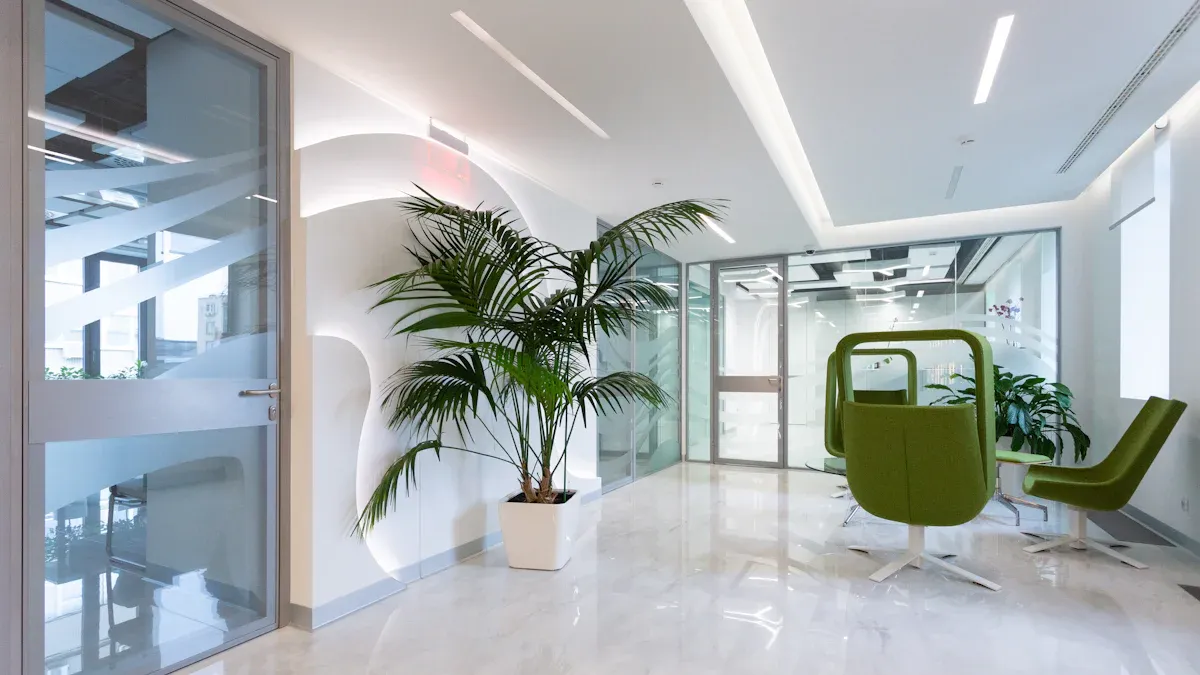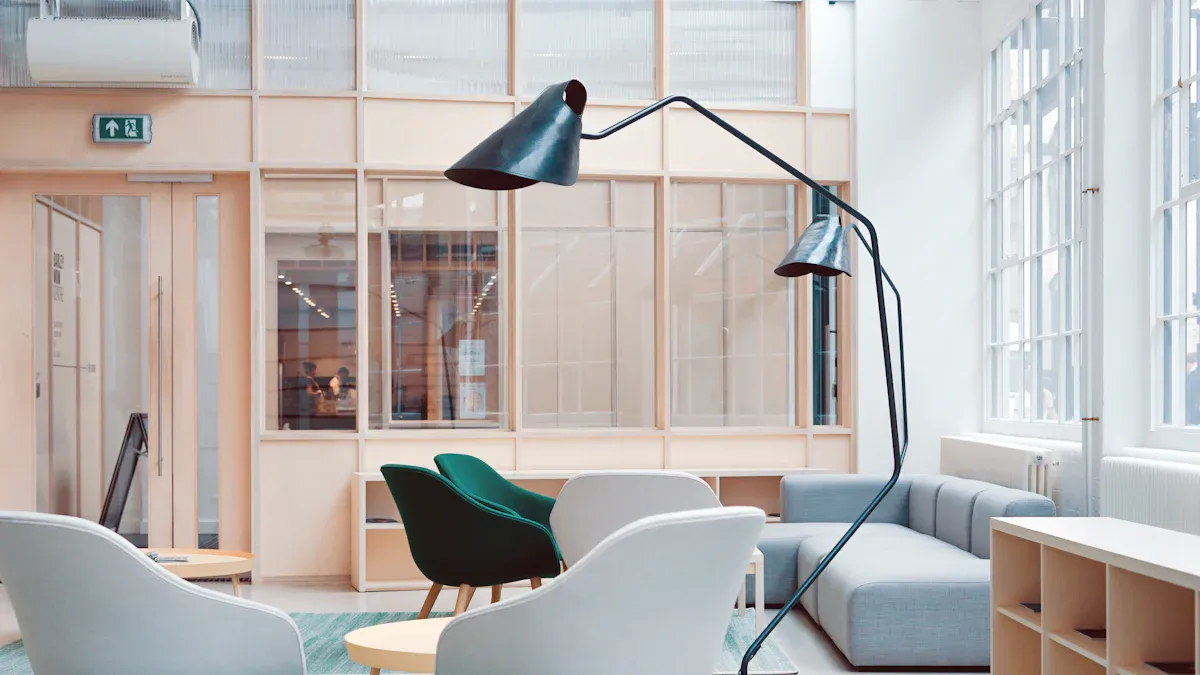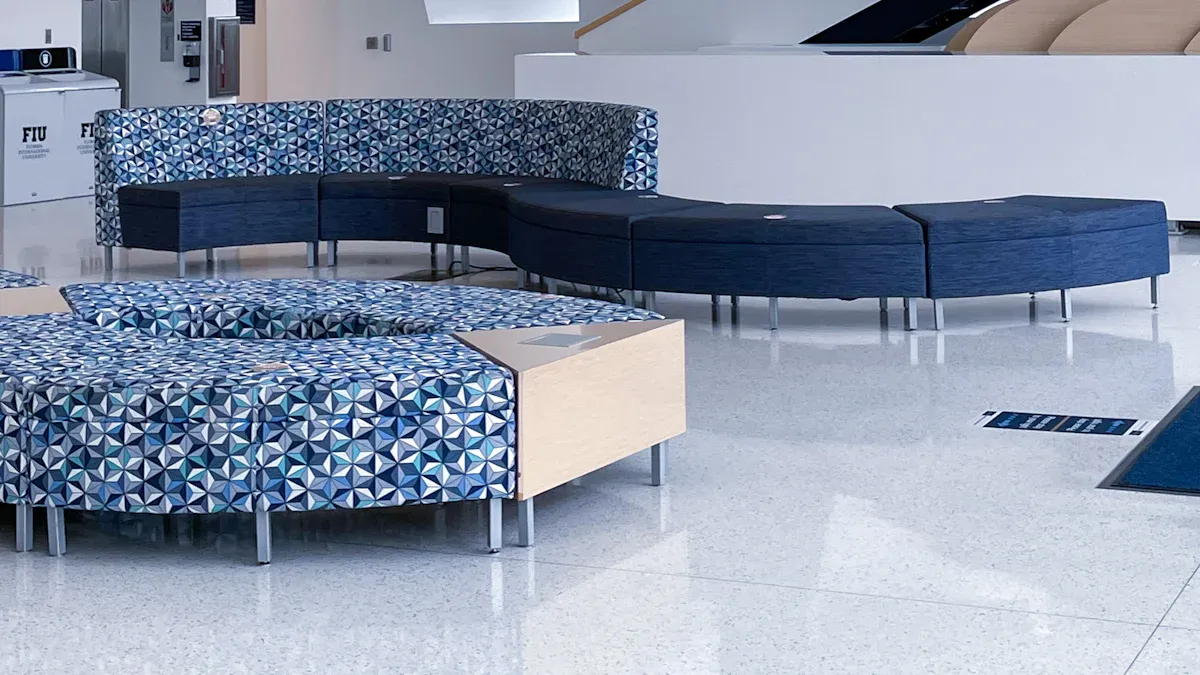Views: 0 Author: Site Editor Publish Time: 2025-03-16 Origin: Site









Dubai’s healthcare sector is entering a transformative phase where sustainability seamlessly blends with luxury. The demand for luxury hospital furniture Dubai is on the rise, showcasing a commitment to both environmental responsibility and high-end design. Hospitals are increasingly incorporating eco-friendly materials like bamboo and recycled metals, aligning with global sustainability goals. Simultaneously, bespoke, premium-quality furniture is being introduced to cater to the city’s sophisticated and affluent population. These advancements go beyond aesthetics—they are redefining patient care. From ergonomic designs that boost staff efficiency to smart hospital beds equipped with real-time monitoring, every element reflects Dubai’s forward-thinking approach to innovative, patient-centered healthcare.
Fancy hospital furniture in Dubai is comfy and looks nice. It helps patients heal faster and makes work easier for staff.
Eco-friendly materials like bamboo and reused metals are used. These help keep the environment clean and healthy.
Hospitals can pick custom furniture to fit each patient’s needs. This makes patients feel better and get better care.
Smart furniture has cool features like built-in monitors. These make patients safer and help doctors and nurses work faster.
Dubai’s hospital furniture is inspired by its culture. This makes hospitals look fancy and feel welcoming for everyone.

When you think of hospital furniture, comfort might not be the first thing that comes to mind. But in Dubai, the concept of luxury hospital furniture is changing that perception. Ergonomic designs are now a priority, ensuring both patients and healthcare staff experience maximum comfort. Adjustable beds, reclining chairs, and supportive seating are reshaping medical environments. These innovations don’t just look good—they improve efficiency and reduce physical strain for staff while promoting faster recovery for patients.
Luxury hospital furniture Dubai is also about using the finest materials. Imagine walking into a hospital room with furniture crafted from polished wood, soft leather, or premium fabrics. These materials not only elevate the aesthetics but also create a calming atmosphere. Studies show that patients in rooms with natural elements, like wood finishes, recover faster and feel less stressed. By blending functionality with beauty, Dubai’s hospitals are setting a new standard for healthcare design.
Patient-centered design goes beyond comfort—it’s about creating spaces that heal. Furniture plays a big role in this. Softer colors, curved edges, and nature-inspired elements reduce stress and encourage relaxation. Patients in rooms with natural views recover 8.5% faster and need less pain medication. This approach transforms hospital stays into experiences that support both physical and mental well-being.
Every patient is unique, and their furniture should reflect that. Customizable options, like adjustable beds and modular seating, allow hospitals to cater to individual needs. Whether it’s a chair that reclines for better sleep or lighting that adjusts to create a soothing environment, these features make patients feel cared for. It’s luxury with a purpose—enhancing comfort while promoting recovery.
Hongye Furniture Group has become a leader in designing luxury hospital furniture Dubai. Their expertise lies in blending high-end materials with innovative designs tailored for healthcare settings. From ergonomic seating to modular systems, their furniture solutions prioritize both aesthetics and functionality.
A standout example of Hongye’s work is the Saudi German Hospital project. This facility showcases how luxury hospital furniture can transform healthcare spaces. With premium materials and patient-centered designs, Hongye created an environment that feels more like a five-star hotel than a hospital. The project highlights their commitment to redefining healthcare furniture in Dubai.




Sustainability starts with the materials you choose. Bamboo, recycled metals, and low-VOC finishes are becoming staples in hospital furniture design. Bamboo offers durability and a natural aesthetic, while recycled metals reduce the demand for virgin resources. Low-VOC finishes ensure healthier indoor air quality, which is crucial for patient recovery. These materials don’t just look good—they actively contribute to a cleaner environment.
Healthcare organizations are increasingly opting for furnishings that align with their environmental goals. Many modern hospital furniture pieces now carry certifications like LEED and GreenGuard, ensuring they meet strict chemical emission standards. Suppliers are also introducing product lines made from organic materials and eco-friendly fabrics, reflecting a growing commitment to sustainability.
Manufacturing processes are evolving too. Energy-efficient techniques minimize waste and reduce carbon footprints. Life Cycle Analysis (LCA) evaluates the environmental impact of furniture from raw material extraction to disposal. This approach helps healthcare facilities make informed decisions, saving costs and reducing their environmental footprint.
Recyclable furniture is a game-changer. Designs that allow for easy disassembly make recycling simpler and more effective. This reduces landfill waste and ensures materials can be reused in future products.
Modular systems take sustainability a step further. They’re built to adapt to changing needs, extending their lifespan and reducing waste. Here’s how modular designs benefit hospitals:
| Description | Advantage |
Eco-friendliness | Modular construction generates less waste compared to traditional methods. |
Resource efficiency | It utilizes resources more effectively, allowing for better recycling and reuse of materials. |
Reduced on-site pollution | Factory production minimizes pollution and disturbance to surrounding areas. |
Energy efficiency | Modular buildings are often designed to be more energy-efficient, leading to lower operating costs. |
Hongye Furniture Group is leading the way in sustainable hospital furniture design. They prioritize sourcing eco-friendly materials like bamboo and recycled metals. Their commitment ensures that every piece of furniture contributes to a greener future.
The Saudi German Hospital project is a prime example of Hongye’s dedication to sustainability. The furniture used in this facility combines luxury with eco-conscious design. By integrating modular systems and recyclable materials, Hongye has created a space that’s both functional and environmentally responsible. This project showcases how luxury hospital furniture Dubai can align with sustainability goals.
Imagine a hospital bed that not only adjusts for comfort but also monitors your vital signs in real time. This is the future of healthcare furniture. Smart beds equipped with sensors can track metrics like weight, body temperature, and heartbeat. These features enhance patient safety by detecting risks such as falls or irregular vitals. For healthcare providers, this means quicker responses and better care.
Smart hospital beds, like the SmartMedic platform, are revolutionizing patient care. They allow real-time monitoring, reducing complications and improving outcomes.
In today’s tech-driven world, staying connected is essential—even in hospitals. Modern hospital furniture now includes wireless charging stations and connectivity hubs. These features let patients charge devices without hassle and help staff stay connected to critical systems. It’s all about making healthcare environments more efficient and patient-friendly.
Hospitals are dynamic spaces. Modular furniture designs make it easier to adapt to shifting demands. For example, a single piece of furniture can transform from a patient bed to a treatment chair. This flexibility ensures that healthcare facilities can meet varying patient loads and treatment types without needing constant upgrades.
| Trend | Description |
Space Optimization | Enhances the use of available space in urban healthcare settings. |
Modularity | Allows for easy reconfiguration to meet changing healthcare needs. |
Multi-functionality | Furniture that serves multiple purposes to maximize utility. |
Urban hospitals face unique challenges, like limited space. Space-saving furniture, such as folding wall beds and modular seating systems, helps maximize every square foot. These designs are perfect for busy hospitals where efficiency and functionality are key.
Dubai’s rich cultural heritage plays a big role in shaping furniture design. You’ll often see intricate Middle Eastern patterns, vibrant colors, and luxurious textures incorporated into hospital furniture. These elements create a sense of familiarity and warmth, making healthcare spaces feel less clinical and more inviting. This approach not only respects the region’s traditions but also enhances the overall patient experience.
Design trends in Dubai also reflect the city’s global appeal. For example:
The hospitality sector’s growth has driven demand for stylish, functional furniture that aligns with Dubai’s luxury identity.
Urbanization and higher disposable incomes have increased the preference for personalized and multifunctional designs.
Sustainability concerns have led to a cultural shift toward eco-friendly materials and minimalist aesthetics.
By blending tradition with modernity, Dubai’s hospitals are creating spaces that feel both luxurious and culturally grounded.
Striking a balance between tradition and innovation is key in Dubai. Furniture designers are finding creative ways to merge classic Middle Eastern motifs with cutting-edge technology. Imagine a hospital bed with traditional wood finishes but equipped with smart features like real-time monitoring. This fusion of old and new ensures that healthcare spaces remain functional while honoring the region’s unique identity.
Dubai’s population is incredibly diverse, and hospital furniture must cater to this variety. For instance, privacy screens and adjustable seating options can accommodate cultural sensitivities. These thoughtful touches make patients from different backgrounds feel respected and comfortable.
Hospitals also consider the needs of families, as many cultures in Dubai value family involvement in healthcare. Furniture like fold-out beds for visitors or spacious seating areas ensures that loved ones can stay close during recovery.
Dubai’s global outlook is evident in its furniture designs. Hospitals here often feature a mix of international styles, reflecting the city’s inclusive nature. Whether it’s Scandinavian minimalism or Italian luxury, these influences create a welcoming environment for everyone.
This inclusivity extends to functionality as well. Ergonomic designs and modular furniture cater to the needs of patients, staff, and visitors alike. By prioritizing comfort and accessibility, Dubai’s hospitals are setting a global standard for healthcare design.
Combining sustainability with luxury in hospital furniture isn’t just a trend—it’s the future. Dubai’s healthcare sector leads the way, blending eco-friendly practices with cutting-edge designs to create patient-centered spaces. This approach improves outcomes, as seen in thoughtfully designed environments where patients recover faster and staff experience less burnout.
Patients report shorter recovery times and fewer infections.
Staff satisfaction rises with reduced turnover and burnout rates.
Facilities see fewer medical errors and better efficiency.
| Trend/Prediction | Details |
Market Growth Rate | |
Projected Market Size | USD 11.7 Billion by 2033 |
Focus on Sustainability | Emphasis on eco-friendly practices |
Technological Integration | Investments in smart healthcare solutions |
Hongye Furniture Group continues to shape this future, delivering innovative, sustainable, and luxurious solutions tailored to Dubai’s unique needs.
Luxury hospital furniture in Dubai combines high-quality materials like leather and wood with ergonomic designs. It prioritizes comfort, aesthetics, and functionality, creating spaces that feel more like a five-star hotel than a medical facility.
Eco-friendly furniture reduces environmental impact and improves indoor air quality. Materials like bamboo and recycled metals promote sustainability, while modular designs extend product life and minimize waste.
Absolutely! Many hospitals offer adjustable beds, modular seating, and lighting options tailored to individual needs. These features enhance comfort and recovery, making patients feel cared for.
Smart furniture includes beds with integrated monitoring systems, wireless charging stations, and IoT connectivity. These innovations improve patient care and streamline healthcare operations.
Hongye Furniture Group blends luxury, sustainability, and technology in its designs. Their projects, like the Saudi German Hospital, showcase their expertise in creating functional and culturally sensitive furniture solutions.